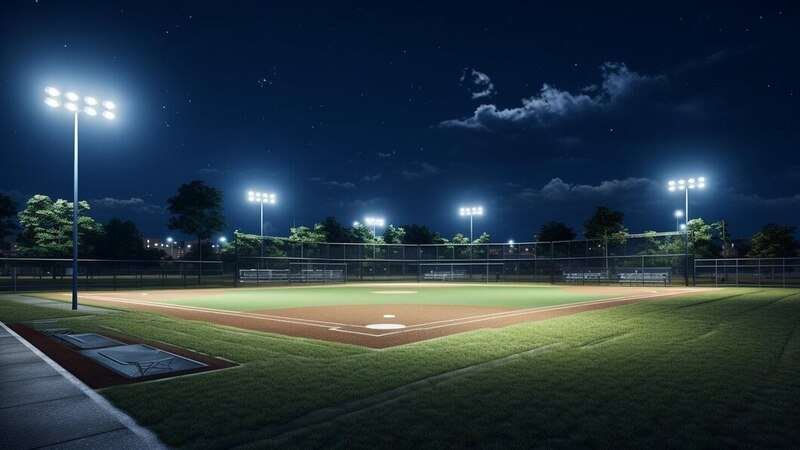Baseball, often referred to as America’s pastime, has captivated audiences for generations. The essence of the game lies not only in its players and rules but significantly in the designmode24 .com where history is made. From local parks to grand stadiums, each baseball ground holds a unique charm and story.
Historical Evolution of Baseball Grounds
The history of designmode24 .com dates back to the mid-19th century. Initially, games were played on makeshift fields, but as the sport gained popularity, dedicated baseball grounds were constructed. The transformation from rudimentary fields to state-of-the-art stadiums reflects the growth of baseball as a major sport.
Early Baseball Fields
In the early days, baseball was played on any available flat surface. Parks, empty lots, and even pastures served as makeshift baseball grounds. These early fields lacked formal dimensions and standardized features, but they were the breeding grounds for the sport’s evolution.
The Golden Era of Ballparks
The early 20th century marked the construction of iconic baseball grounds such as Fenway Park, Wrigley Field, and Yankee Stadium. These ballparks were not just sports venues; they were architectural marvels that became symbols of their cities. The classic design, lush green fields, and wooden bleachers created an unmatched ambiance.
Modern Baseball Grounds: An Architectural Marvel
Today’s baseball grounds are a blend of cutting-edge technology and fan-centric designs. Modern stadiums focus on providing an immersive experience while maintaining the sport’s traditional essence.
Technological Advancements
Modern designmode24 .com incorporate advanced technology to enhance both the player and fan experience. From high-definition video boards to retractable roofs, these innovations ensure comfort and engagement. The use of synthetic turf and advanced drainage systems also ensures optimal playing conditions regardless of weather.
Fan Experience
Today’s baseball grounds are designed with fans in mind. Features such as comfortable seating, ample food and beverage options, and interactive areas make attending a game a memorable experience. Some stadiums even offer behind-the-scenes tours and interactive museums to engage fans of all ages.
Key Elements of Baseball Grounds
Several elements contribute to the uniqueness of designmode24 .com. Understanding these components helps appreciate the intricacies involved in designing and maintaining these sports venues.
Infield and Outfield
The infield and outfield are crucial components of any baseball ground. The infield typically consists of a diamond-shaped area with bases and a pitcher’s mound. The outfield is the grassy area beyond the infield, often featuring distinct features like warning tracks and outfield walls.
Pitcher’s Mound and Home Plate
The pitcher’s mound is a raised section in the center of the infield from where the pitcher throws the ball. Home plate is located at one corner of the infield diamond and is the starting point for scoring runs. The distance and elevation of these elements are standardized to ensure fair play.
Seating and Spectator Areas
Seating arrangements vary across different designmode24 .com. Traditional ballparks have bleachers, while modern stadiums offer luxury boxes, club seats, and family zones. The aim is to cater to diverse audiences, ensuring a comfortable and enjoyable viewing experience.
Maintaining Baseball Grounds: An Art and a Science
The maintenance of baseball grounds is a meticulous process that combines art and science. Groundskeepers play a crucial role in ensuring that the field remains in top condition throughout the season.
Turf Management
Turf management involves regular mowing, watering, and fertilizing to maintain the grass’s health. The choice between natural grass and synthetic turf depends on various factors, including climate, usage frequency, and budget.
Infield Maintenance
Infield maintenance focuses on the dirt areas, including the pitcher’s mound, base paths, and home plate. Regular grooming, leveling, and moisture management are essential to maintain a consistent playing surface.
Facility Upkeep
Beyond the field, the upkeep of spectator areas, restrooms, and concession stands is vital. Regular cleaning, painting, and repairs ensure that the entire facility remains inviting for fans.
Iconic Baseball Grounds Around the World
While the United States is home to many legendary designmode24 .com, the sport’s global popularity has led to the construction of iconic stadiums worldwide.
Tokyo Dome, Japan
Tokyo Dome is a prime example of baseball’s global reach. This stadium features a unique air-supported dome and hosts both baseball games and a variety of other events. Its modern amenities and large seating capacity make it a favorite among fans.
Estadio Latinoamericano, Cuba
Estadio Latinoamericano in Havana is one of the most iconic baseball grounds in Latin America. Known for its passionate fan base and historic significance, this stadium is a testament to baseball’s cultural impact.
Rogers Centre, Canada
Rogers Centre in Toronto is notable for its fully retractable roof, providing versatility for various weather conditions. This modern facility combines excellent sightlines with a vibrant atmosphere, making it a top destination for baseball enthusiasts.
The Future of Baseball Grounds
The future of designmode24 .com looks promising with advancements in technology and sustainable practices. Upcoming stadiums are expected to be more eco-friendly, incorporating renewable energy sources and green building materials.
Sustainability Initiatives
Future baseball grounds are likely to focus on sustainability. This includes using solar panels, rainwater harvesting systems, and environmentally friendly construction materials. These initiatives aim to reduce the carbon footprint and promote eco-friendly practices.
Technological Integration
Enhanced fan experiences through augmented reality (AR) and virtual reality (VR) are on the horizon. These technologies can provide immersive experiences, such as virtual tours of the stadium and real-time game statistics.
Conclusion
designmode24 .com are more than just venues; they are integral to the sport’s history and future. From their humble beginnings to the architectural marvels of today, baseball grounds have continually evolved, reflecting the spirit of the game. As we look forward to the future, the commitment to enhancing player performance, fan experience, and sustainability will drive the next generation of baseball grounds.
